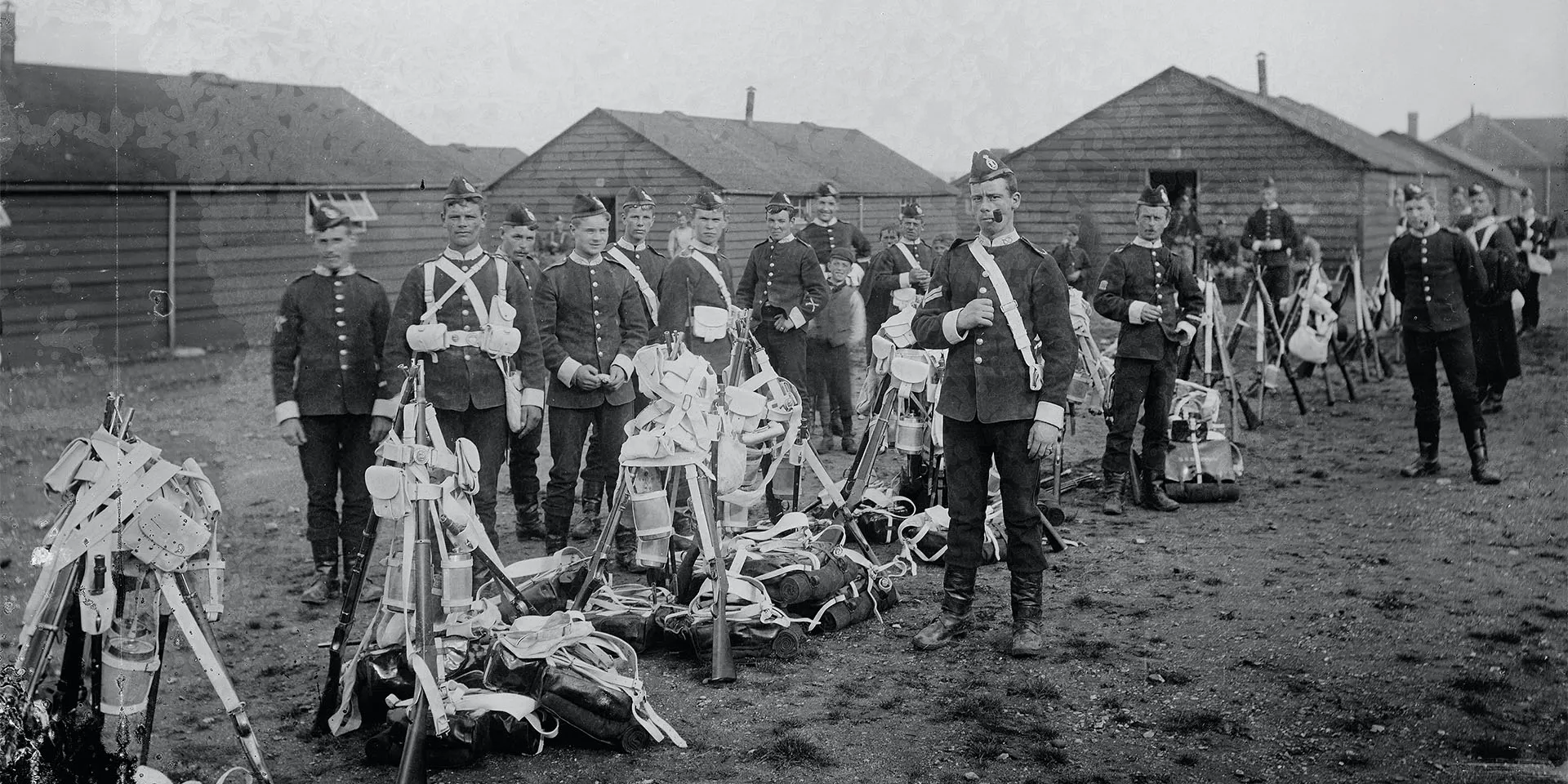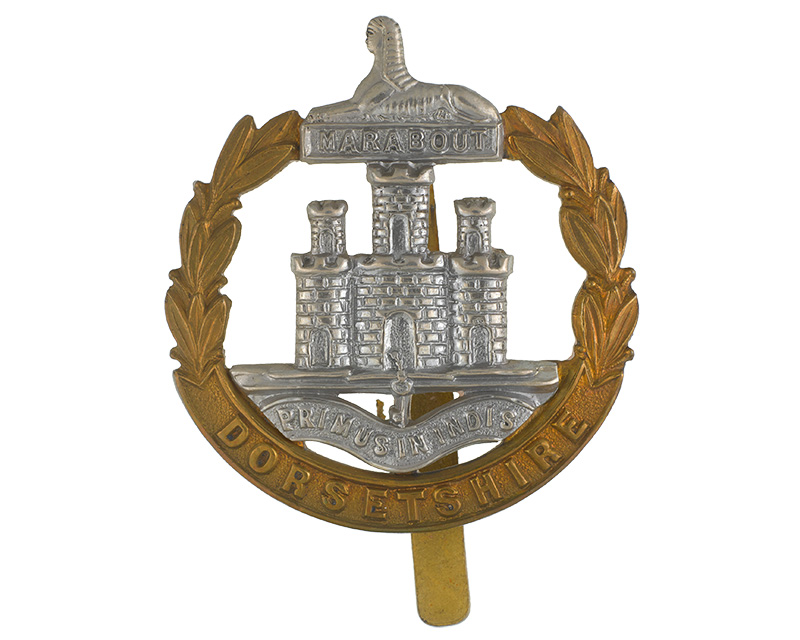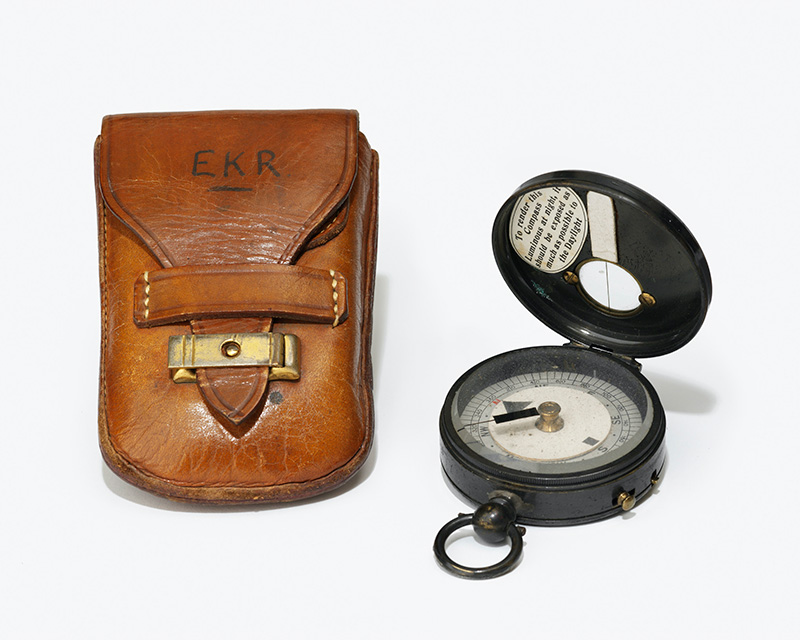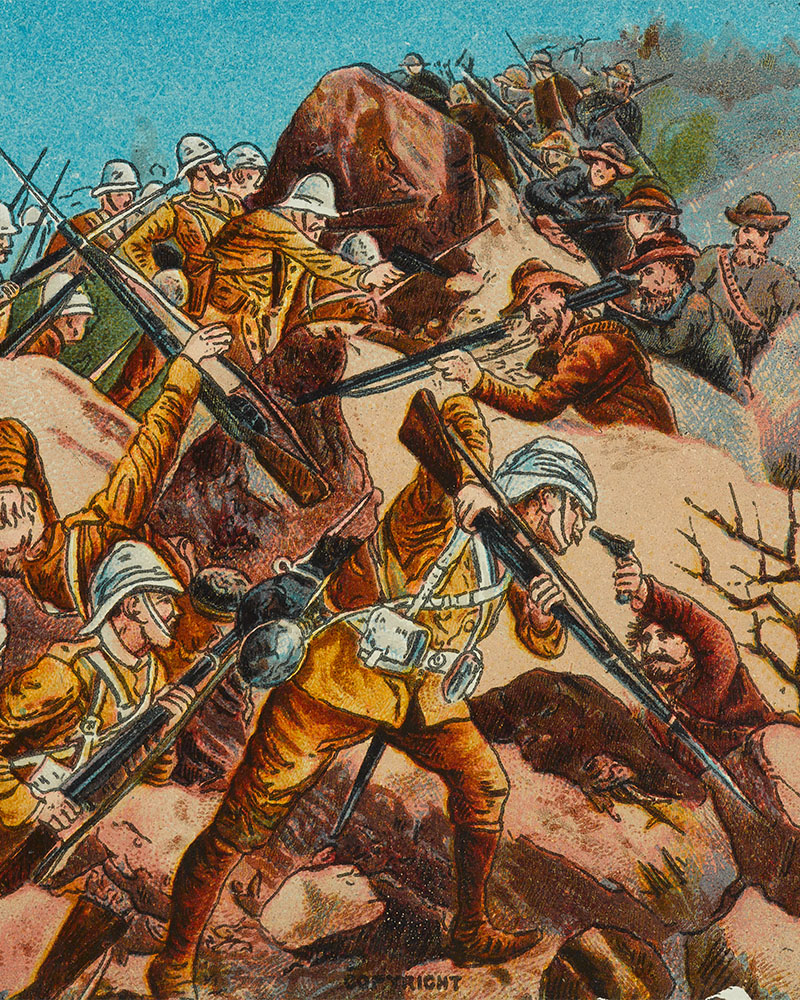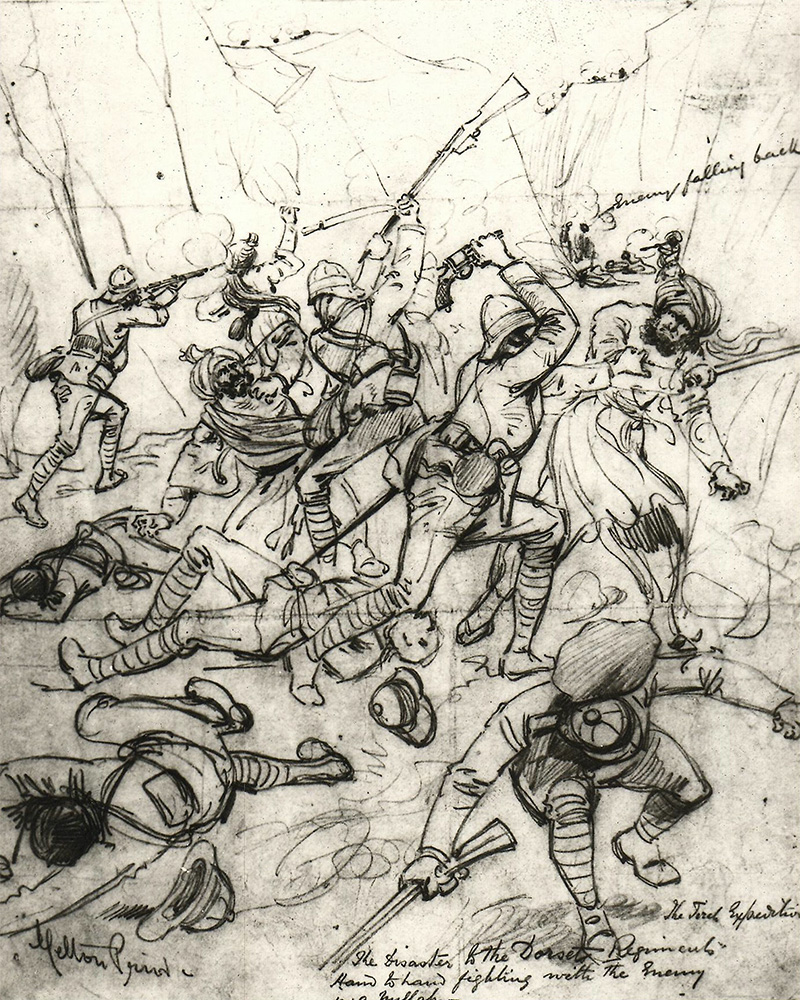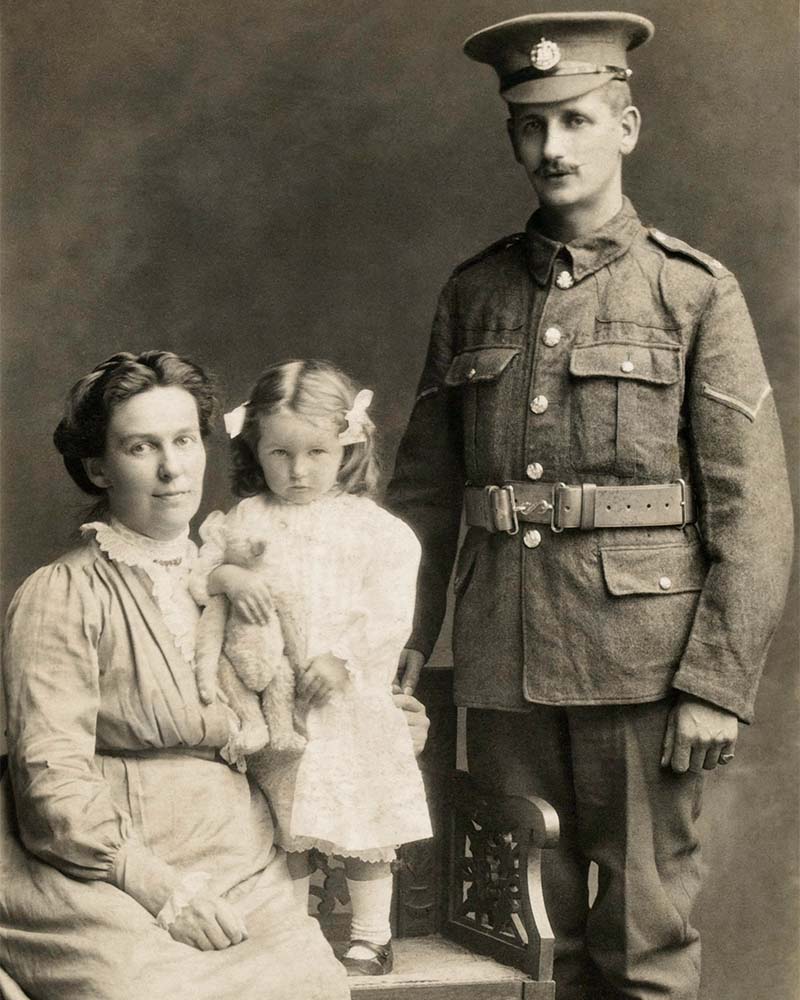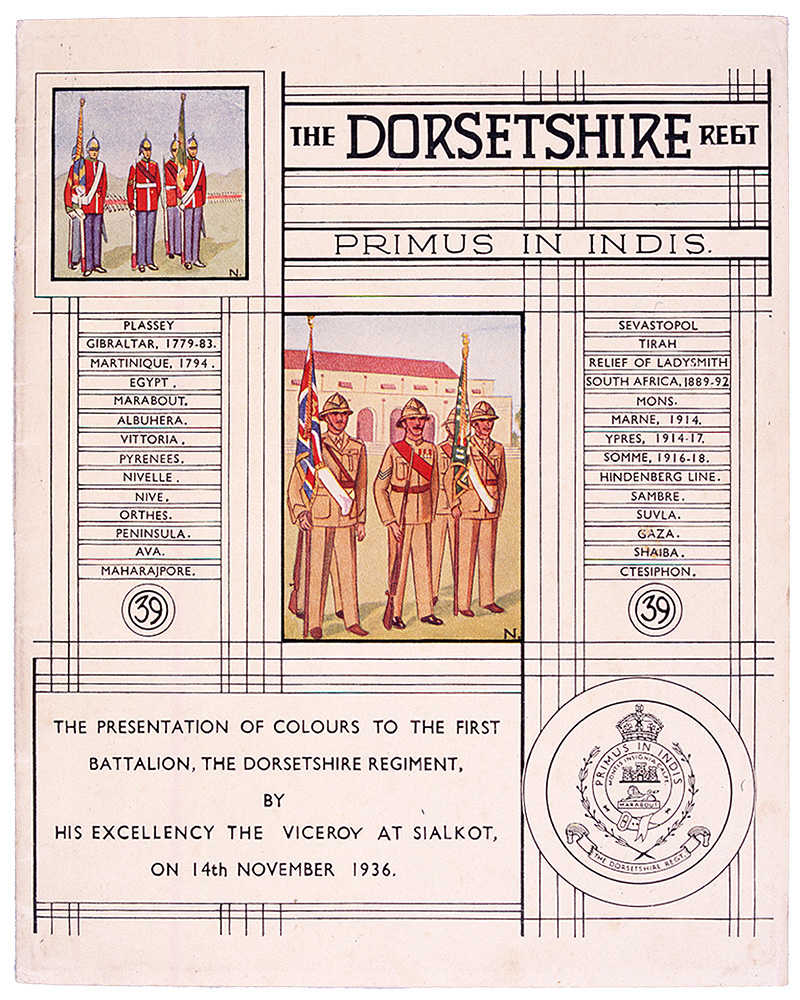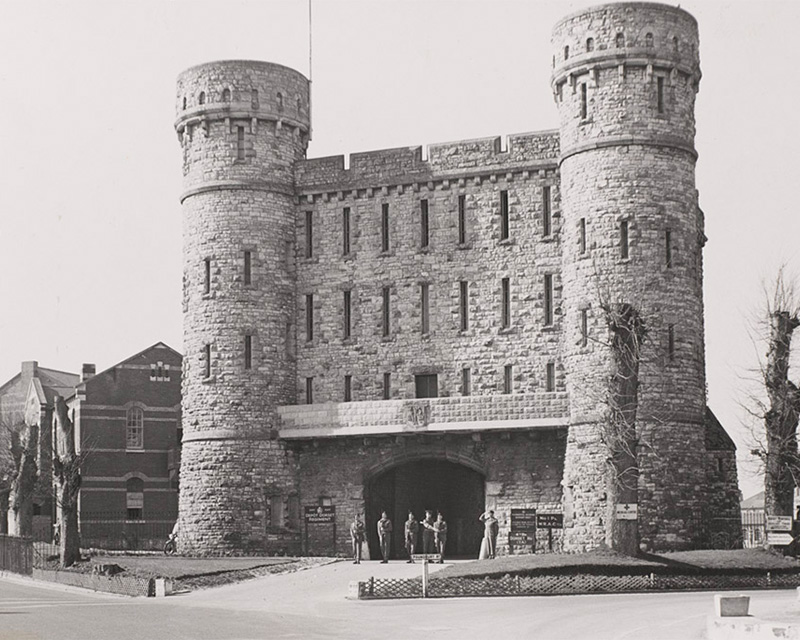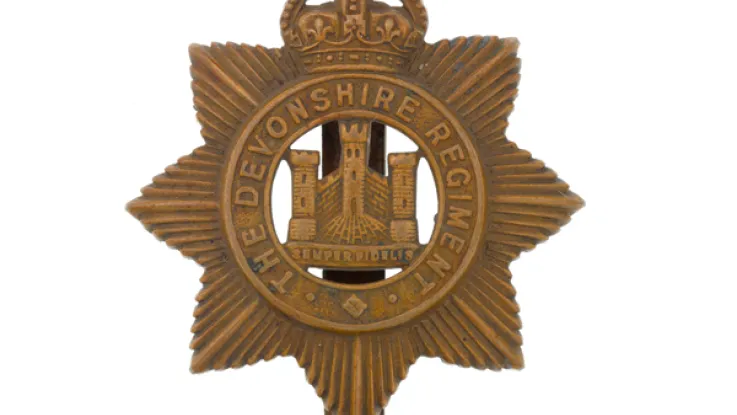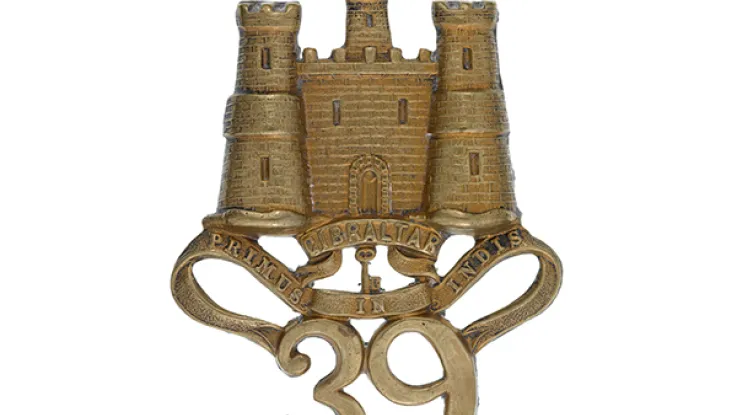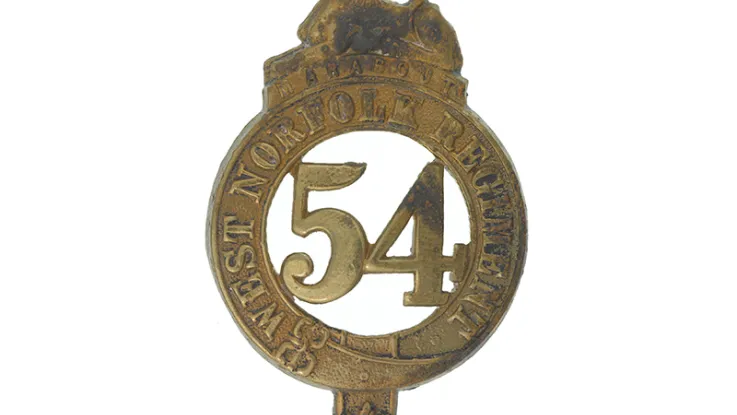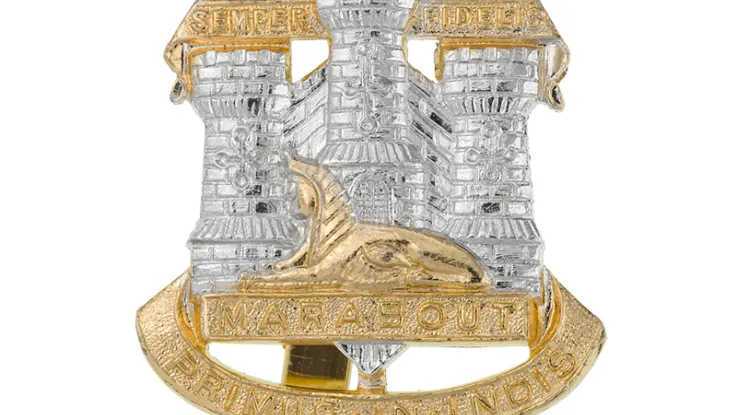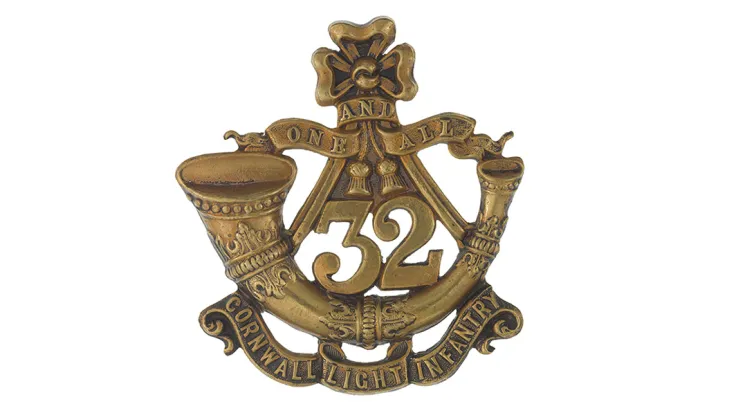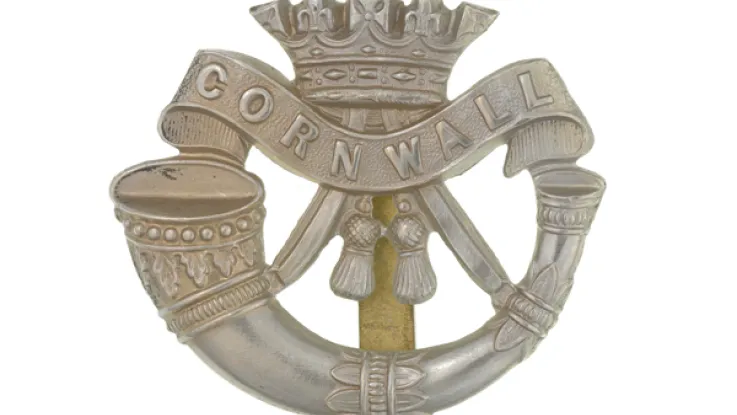Origins
The regiment was formed in the Army reforms of 1881 by merging the 39th (Dorsetshire) Regiment of Foot and the 54th (West Norfolk) Regiment of Foot. These became the new unit’s 1st and 2nd Battalions respectively.
Early deployments
Both battalions were in India at the time of the merger. 1st Battalion returned to England the following year, spending the rest of the 1880s on Malta, aside from a brief spell in Egypt in 1885-86. 2nd Battalion only returned home in 1886.
In 1889, 1st Battalion again embarked for Egypt, before moving on to India in 1893. It remained there for the next 13 years and fought in the Tirah campaign (1897) on the North-West Frontier.
2nd Battalion was also on the move in the 1890s. It was in Ireland from 1893 to 1898, and then deployed to the Boer War (1899-1902), where it took part in the Relief of Ladysmith in 1900.
First World War
On the outbreak of the First World War (1914-18), 1st Battalion was in Britain and so deployed straight to the Western Front. It stayed there throughout the conflict and was the first-ever British unit to face a gas attack, on 5 May 1915 at Hill 60.
2nd Battalion had moved back to India in 1906 and deployed from there to Mesopotamia in November 1914. It suffered such heavy casualties that in February 1916 it had to amalgamate with 2nd Battalion, The Norfolk Regiment to form the English Battalion, nicknamed ‘the Norsets’.
It was able to re-form as an independent battalion five months later, remaining in Mesopotamia until April 1918. It then moved to Egypt, Palestine and finally Syria.
The regiment also raised three Territorial and three New Army battalions during the conflict. One of these, 5th Battalion, fought at Gallipoli in 1915.
Inter-war years
In 1919, 1st Battalion moved to Ireland for five years. That same year, 2nd Battalion was sent to India for three years, facing the Malabar or Moplah Rebellion in 1921. Both battalions also spent time in Egypt and the Sudan during the early 1920s.
In 1927, 1st Battalion began another eleven years in India. 2nd Battalion moved to Palestine in 1936, but was back in Britain the following year.
Second World War
On the outbreak of the Second World War (1939-45), 2nd Battalion deployed straight to France. It was evacuated in June 1940 and then stayed in Britain until June 1942, when it shipped to Burma, the theatre in which it would see out the rest of the conflict. This service included the Battle of Kohima (1944).
1st Battalion had moved to Malta in 1938. It remained there until May 1943, when it re-deployed to Tunisia before joining the invasions of Sicily and Italy later that year.
In November 1943, 1st Battalion moved back to Britain in preparation for its landing in Normandy on D-Day (6 June 1944). It then fought its way through North West Europe until late 1944 when heavy losses led to its withdrawal from the frontline.
The 4th and 5th Battalions were both part of 130th Infantry Brigade in the 43rd (Wessex) Infantry Division, participating in the Normandy Campaign, Operation Market Garden and the Rhine Crossings.
Post-war deployments
At the end of the war, both regular battalions joined occupation forces, 1st Battalion in Austria and 2nd Battalion in Germany. The two battalions then merged in 1948.
In 1951, the unit’s title changed from The Dorsetshire Regiment to The Dorset Regiment. A year later, it moved to Hong Kong, before joining the Commonwealth Contingent in Korea in December 1954.
Legacy
In 1958, the regiment merged with The Devonshire Regiment to form The Devonshire and Dorset Regiment.
Regimental museums
The National Army Museum works with a network of Regimental and Corps Museums across the UK to help preserve and share the history and traditions of the Army and its soldiers.
Discover more about The Dorsetshire Regiment by visiting The Keep Military Museum in Dorchester.

